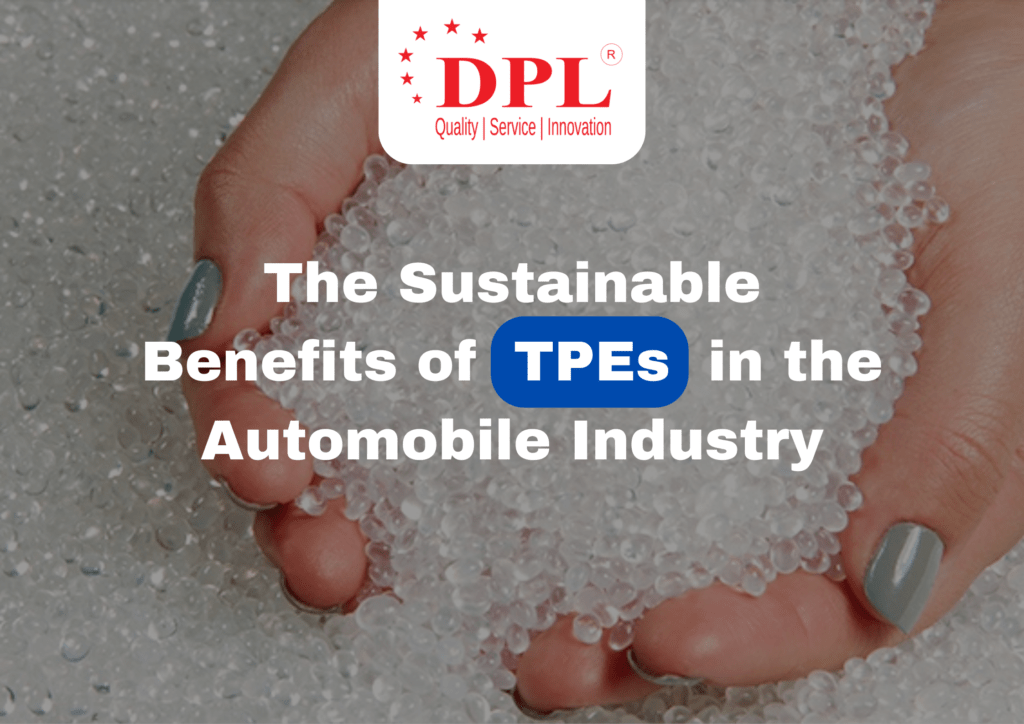
The automotive industry is in a constant state of evolution, driven by advancements in technology, changing consumer preferences and a growing emphasis on sustainability. Thermoplastic elastomers (TPEs) have emerged as a critical material in this landscape, offering numerous benefits that align with the industry’s push towards more sustainable and environmentally friendly practices. This article explores the sustainable benefits of TPEs in the automobile industry, highlighting their applications, environmental advantages and future potential.
What are Thermoplastic Elastomers?
Thermoplastic elastomers are a class of polymers that combine the properties of thermoplastics and elastomers. They can be processed and recycled like plastics but exhibit the flexibility and resilience of rubber. This unique combination makes TPEs highly versatile and suitable for a wide range of applications in the automotive industry.
Key Applications of TPEs in the Automobile Industry
Thermoplastic elastomers have become a important material in the automotive industry due to their versatility, durability and sustainability. Here are some key applications of TPEs in the automotive sector:
Interior Components
TPEs are widely used in automotive interiors for parts such as dashboard skins, door panels and armrests. Their soft-touch feel, durability and aesthetic appeal make them ideal for enhancing the comfort and appearance of vehicle interiors.
Sealing Systems
TPEs are used in weather seals, gaskets and other sealing applications. Their excellent resistance to weathering, flexibility and ability to maintain a tight seal contribute to improved vehicle performance and reduced noise levels.
Exterior Components
TPEs are used for exterior parts like bumpers, side trims and protective covers. They offer impact resistance, UV stability and the ability to withstand harsh environmental conditions, enhancing vehicle safety and longevity.
Under-the-Hood Applications
TPEs are employed in various under-the-hood applications, including hoses, belts and grommets. Their ability to withstand high temperatures and chemical exposure makes them suitable for these demanding environments.
Sustainable Benefits of TPEs
The use of TPEs in the automotive industry offers several sustainable benefits, aligning with the industry’s goals to reduce its environmental impact and enhance resource efficiency.
1. Recyclability
One of the most significant sustainable advantages of TPEs is their recyclability. Unlike traditional thermoset rubbers, which cannot be re-melted and reformed, TPEs can be reprocessed multiple times without significant degradation of properties.
This ability to recycle TPEs contributes to a reduction in waste and the conservation of resources. In the automotive industry, this means that manufacturing scrap and end-of-life vehicle components made from TPEs can be collected, recycled and reused in new products, closing the material loop and promoting a circular economy.
2. Reduced Environmental Impact
TPEs are often produced using processes that generate lower emissions and consume less energy compared to traditional rubber processing. The production of TPEs typically involves fewer volatile organic compounds (VOCs) and hazardous air pollutants (HAPs), contributing to a cleaner manufacturing environment and reducing the overall environmental impact.
Additionally, the ability to mold and process TPEs at lower temperatures than many thermoset materials further decreases energy consumption and greenhouse gas emissions.
3. Lightweighting
The lightweight nature of TPEs plays an important role in reducing the overall weight of vehicles. Lighter vehicles consume less fuel, resulting in lower greenhouse gas emissions and improved fuel efficiency.
By replacing heavier materials with TPEs in various automotive components, manufacturers can achieve significant weight reductions without compromising performance or safety. This contributes to the development of more fuel-efficient and environmentally friendly vehicles.
4. Resource Efficiency
TPEs can be engineered to meet specific performance requirements, allowing for the optimisation of material use. This means that less material is needed to achieve the desired properties, leading to more efficient use of resources. In the automotive industry, this translates to thinner, lighter and more efficient components that still provide the necessary strength, durability and functionality.
5. Extended Product Life
TPEs offer excellent resistance to weathering, UV radiation and chemical exposure, which enhances the durability and longevity of automotive components. This extended product life reduces the need for frequent replacements and repairs, leading to lower material consumption and waste generation over the vehicle’s lifespan. Durable components also contribute to improved vehicle reliability and customer satisfaction.
6. Improved End-of-Life Management
The use of TPEs facilitates better end-of-life management for automotive components. As TPEs can be easily separated and recycled, they contribute to more efficient dismantling and recycling processes for end-of-life vehicles. This not only reduces the amount of waste sent to landfills but also recovers valuable materials that can be reused in the production of new automotive parts.
Closing Thoughts
Thermoplastic elastomers (TPEs) offer numerous sustainable benefits for the automotive industry, including recyclability, reduced environmental impact, lightweighting, resource efficiency, extended product life and improved end-of-life management.
The adoption of TPEs in automotive applications has already led to significant advancements in vehicle performance, comfort and sustainability. As the industry continues to evolve, the role of TPEs is likely to expand, driving further innovations and contributing to the development of more sustainable and environmentally friendly vehicles.
